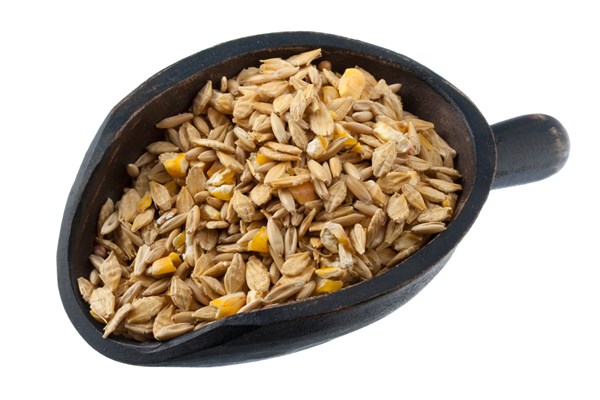 Credit: Thinkstock You cannot tell what is in a feed just by looking at it. Use these tips to learn how to read a feed tag to get the best nutrition for your horse.
Credit: Thinkstock You cannot tell what is in a feed just by looking at it. Use these tips to learn how to read a feed tag to get the best nutrition for your horse.Editor’s note:Many times horse owners are in feed stores and are trying to differentiate between the various feed choices. Here is information from nutritionist Dr. Tania Cubitt of Standlee Forage.
There are a few things you will find on almost every feed bag:
- feed name
- company’s name and contact information
- net weight
- purpose of the feed
- feeding directions
- guaranteed analysis
- ingredient list
Guaranteed Analysis
The guaranteed analysis may well be one of the most misunderstood and underutilized parts of reading a feed tag. The guaranteed analysis tells you what level of each nutrient is in the feed. It is important to note that it doesn’t tell you exactly how much is in there, just the minimum (and for some nutrients the maximum).
So, for example, on the tag below, this feed is guaranteed to have 0.8% lysine. However, it could also have 1.0% lysine, since it doesn’t have a maximum guaranteed. Likewise, it guarantees that the maximum fiber content is 11%. However, it could very well be somewhere around 8%, if that is within the allowed variance by AAFCO (more on that in a minute).
As a rule, the analysis is probably going to be pretty close, simply for an economic reason. The nutrients that has minimums is usually fairly expensive for companies to add to the feed, so they are going to add as little as possible to meet the minimum.
As well, nutrients that have maximums are usually less expensive, so the company will add as much as possible while still meeting the analysis.
It is important to know that feed companies are regulated in what they put on their guaranteed analysis by a group called the American Association of Feed Control Officials (AAFCO). AAFCO sets limits about how far off a company can be from their feed tag (called the variance). The amount of variance allowed depends on the nutrient being discussed, with some nutrients having very small variances, and some having larger variances.
Ingredient List
This is also one of the most important parts of reading a feed tag. The ingredient list tells you exactly what is in the feed, and the ingredients are listed by weight, giving you a better idea of what exactly is in your horse’s feed.
An important aspect of the ingredient list is HOW the ingredients are listed.
Ever seen a feed tag with grain products (or something similar) on the ingredient list? What that means is that they can use any grain they want, and their ingredient tag will still be accurate.
These feeds are called least-cost formulas, and are something to avoid. For example, if corn is cheapest one week, most of that processed grain by-products will be corn. But next week, if oats are cheaper than corn, most of that might be oats.
So, in essence, even though you are buying the same type of feed every week, you could be significantly changing your horse’s diet with each new bag–without even realizing it!
If those grain products are first on the ingredient list, then that’s even worse, because that means that the changing ingredient makes up most of the feed, so you could be putting your horse at risk for digestive upset by changing his feed abruptly every time you open a new bag.
Instead of a feed tag with “grain products” or “forage products” what you want to see instead is the individual ingredients listed. For example, I’d buy a feed that the first three ingredients were “corn, oats, wheat” over a bag that the first ingredient was “grain products” any day, even though those two bags could contain EXACTLY the same ingredients at EXACTLY the same levels. The difference is that I KNOW what is in the first bag, and that there will always be more corn than oats and more oats than wheat in the first bag, while I have no idea what grains, or how much of each, is in the second bag.
If you have a feeding question you would like to be addressed by a nutritionist, you can use our Ask the Expert Forum on nutrition.


